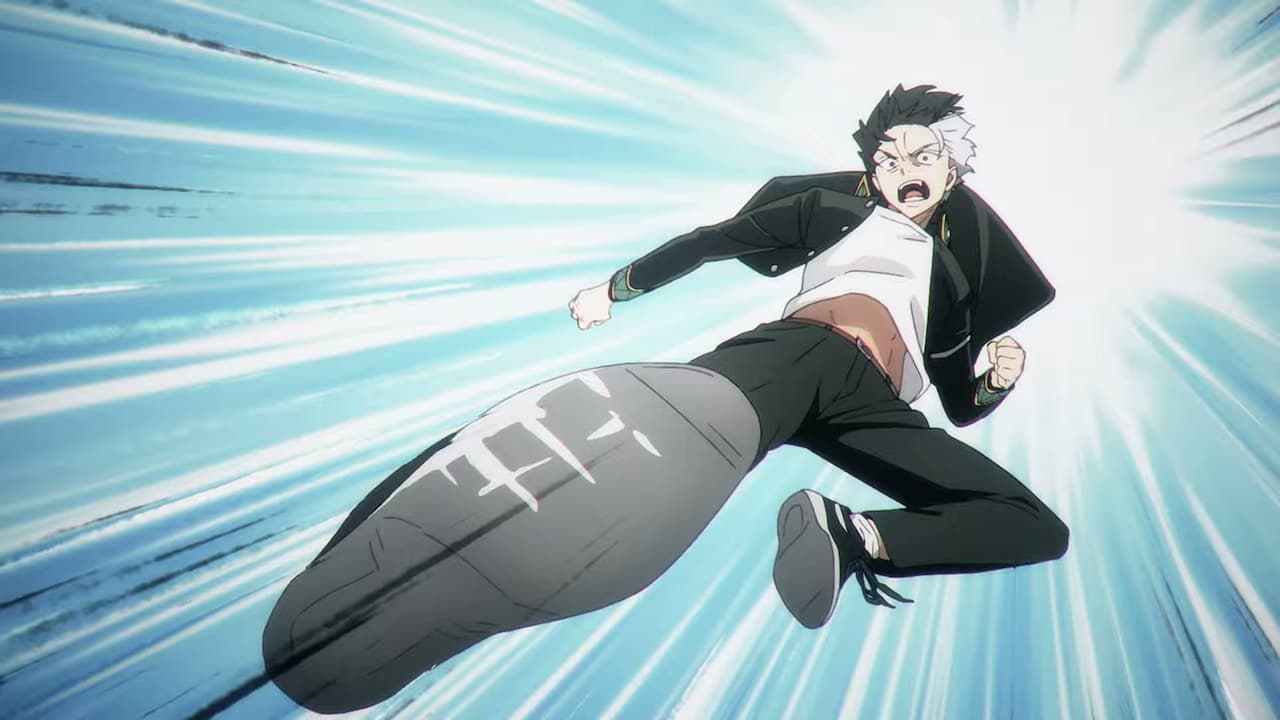Anime is a beautiful way to use animation to tell stories in various genres. However, there are also plenty of subgenres within the anime label, some of which are more popular than others. To find out what kind of story you want to enjoy, here are all anime genres and types explained.
The Different Anime Types, Explained

The names of the five core anime types are derived from their target demographics. All the genres of anime exist mostly within these five types, and you can more or less tell the kind of stories they’re going to be in terms of maturity and themes. These five different Anime types are as follows:
Kodomomuke
The Kodomomuke type of anime is geared toward the youngest age demographic on this list. The stories told in Kodomomuke anime are for children below 12 years of age and usually feature more simplified storytelling and worldbuilding. Action and adventure are the two genre types most closely associated with Kodomomuke, with series such as Pokemon, Digimon Adventures, and Yo-Kai Watch being some of the most prominent examples that Western audiences would be more familiar with.
Shonen
Shonen anime is perhaps the most popular of the five types, and for good reason; some of the best and most popular anime are adaptations of manga that are published in the magazine Weekly Shonen Jump. Geared toward young boys, the Shonen type of anime plays with various genres, though action and adventure make up the majority yet again. Shonen anime may have been a lot of fans’ first foray into the genre, with the most popular examples from this type being Dragon Ball, Naruto, and One Piece.
Shojo
If Shojo is geared towards boys, then the Shojo type of anime could be considered geared towards girls. Shojo anime is more feminine in its portrayal of its characters, and the storytelling used in most Shojo is much more dramatic and romantic than anything you might find in the Shonen type of anime. Shojo isn’t just for girls, though— it’s an anime-type that tells intimate stories and can display emotional maturity that others lack. Shojo titles include Violet Evergarden and Fruits Basket.
Seinen
The Seinen type of anime is where things really start to get intense. With bold and groundbreaking titles such as Vinland Saga, Berserk, and Vagabond, Seinen is mainly created for young adults who want darker, morally ambiguous, and thought-provoking narratives. From horror to psychological thrillers to action and adventure, Seinen plays in a wide range of genres while not holding back in possibly graphic imagery and violence.
Josei
Just as Shojo was a narrative and thematic parallel to Shonen, as is Josei to Seinen anime. This particular type is heard by young adult women and, most of the time, can be the non-violent equivalent of some Seinen stories. Popular anime in the Jsoei category include Princess Jellyfish and Kids on the Slope. You can expect realistic portrayals of relationships along with challenges and struggles everyday viewers can empathize with.
Related: How To Watch Demon Slayer in Order – All Seasons & Movies
The Different Anime Genres, Explained

Besides the five core types of anime, there are also genres that exist within these types. You can find all sorts of anime under the umbrella of a single genre, with so many of them being considered classics or essential watches. Here are some of the most popular genres and specific titles that explore and use the genre to their fullest.
Slice of Life
This genre of anime is usually low-stakes and, as the name implies, explores the daily lives of the characters in the anime. Slice-of-life anime can be realistic, have a fantasy backdrop, or anything else as long as it focuses on the everyday life of its cast. The genre excels at making the mundane feel exciting and helps to showcase the joy of living everyday life. Examples of anime in this genre include Hyouka, My Dress-Up Darling, and Horimiya.
Isekai
One genre of anime that has grown in prominence with each passing season is the Isekai. Reincarnation is the biggest story point in Isekai, and it involves the main characters being transported to a fantasy world or some other backdrop that is a complete contrast from whatever the character is used to. This transportation usually happens by reincarnation, with the protagonist dying in the “real” world and reincarnating elsewhere. Popular examples include Mushoku Tense and Re: Zero.
Mecha
Mecha anime is just that: anime featuring mechanical robots of some kind that are usually massive, which human pilots control. This anime genre can have different kinds of storytelling depending on what type of anime it is. There are mecha anime like Evangelion that offer profound ponderings on human existence and individuality and ones that lean more into the Shonen archetypes, such as Gurren Lagann, which have breathtaking robot battles and a touching story about human resilience in the face of overwhelming odds.
Idol
Idol culture is incredibly popular and prominent in Japan, so it only makes sense that there would be anime series and films that delve deep into the culture. One famous example of an Idol anime is the feature film Perfect Blue by director Satoshi Kon, who uses the toxic fan culture surrounding idols to tell a mind-bending psychological story. There is also acclaimed anime, like Oshi no Ko, which tells a reincarnation story with the backdrop of Idol Culture, exploring every facet possible of the Japanese entertainment industry.
Sports
Sports anime are wide-ranging and usually fall into the Shonen category. Matchups between players or teams in any given sport play out like battles, which generally encourages the creators of these anime to lean more into the Shonen tropes. Some of the most popular sports anime include Slam Dunk (and its feature film continuation The First Slam Dunk), Haikyuu, and Blue Lock. There can also be Sports anime that lean more into Shojo trappings, such as Blue Box, which interweaves the competitiveness and passion of sports with a slow-burn romance between two high school students.
And those are all anime genres and types, explained.






Published: Oct 24, 2024 01:02 pm